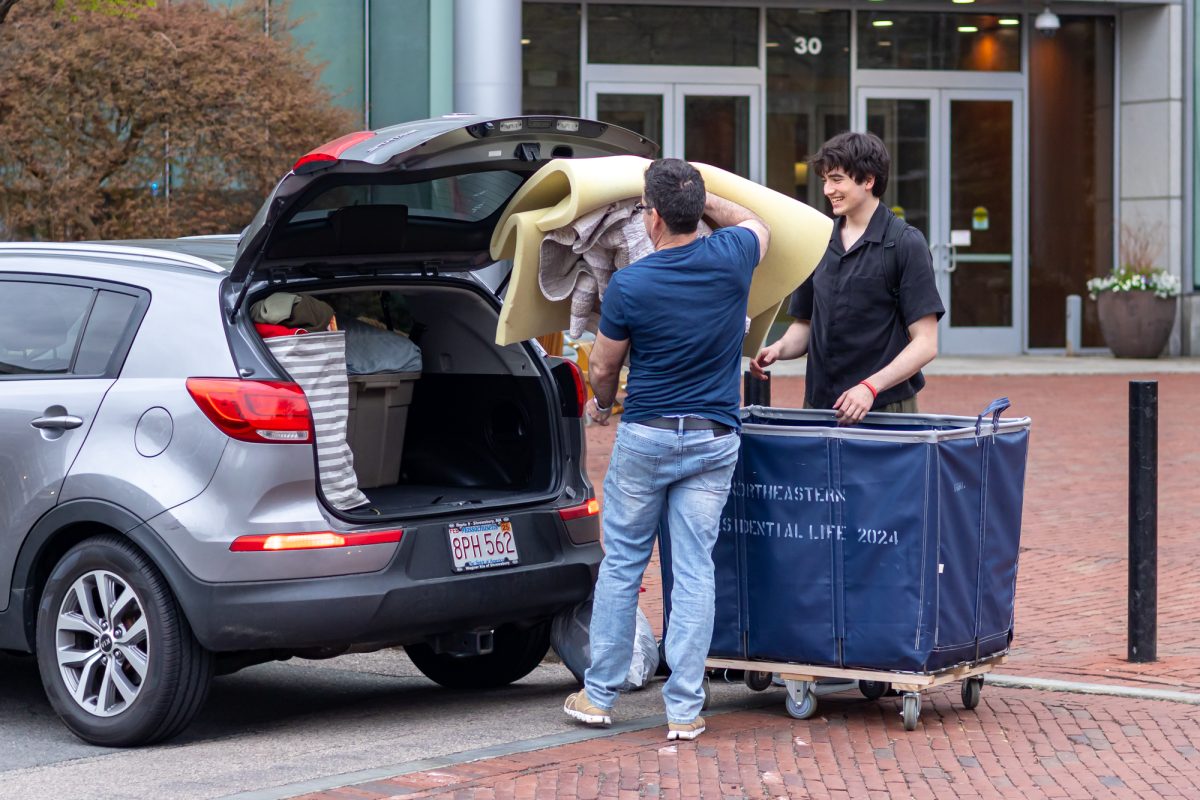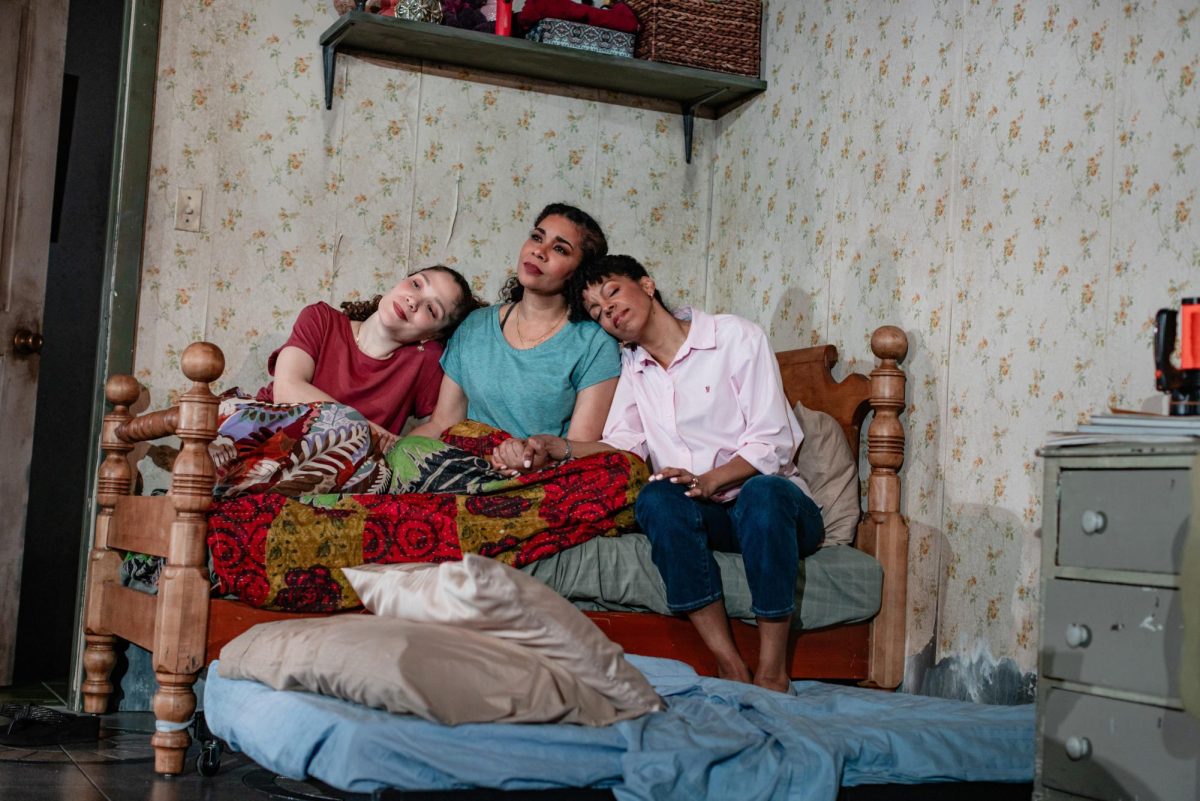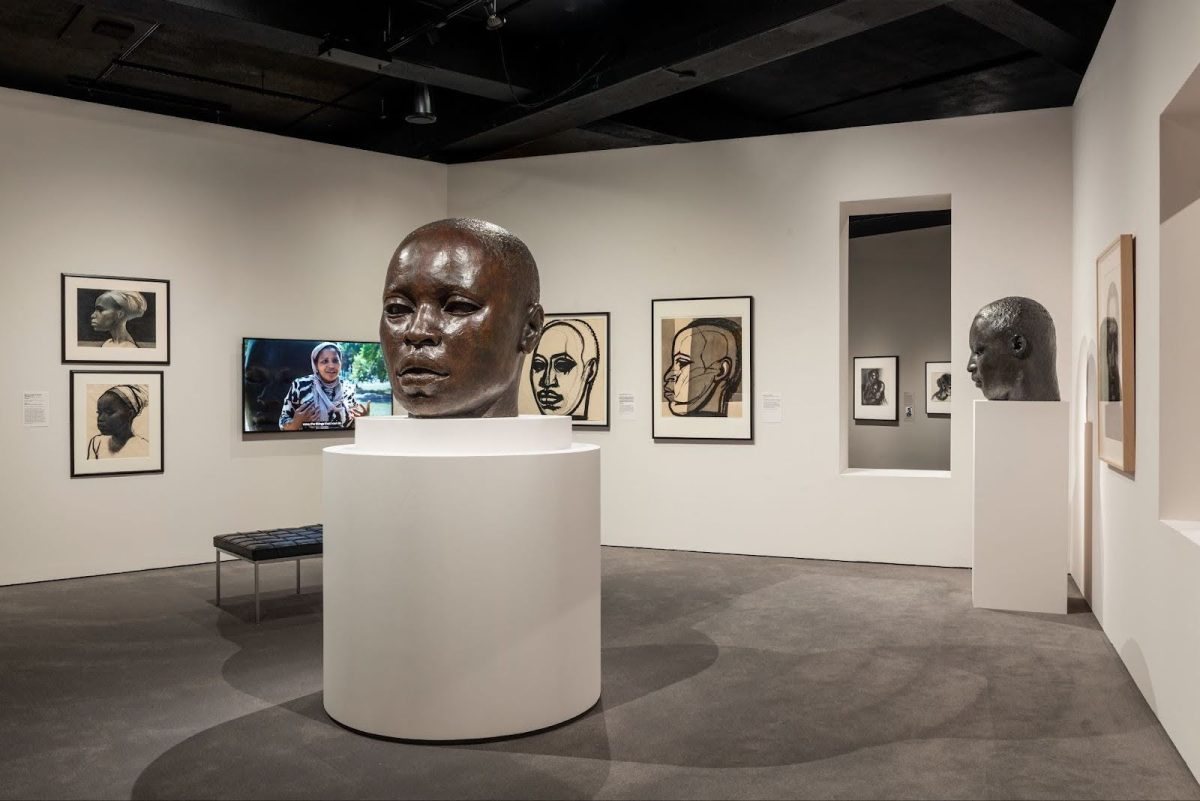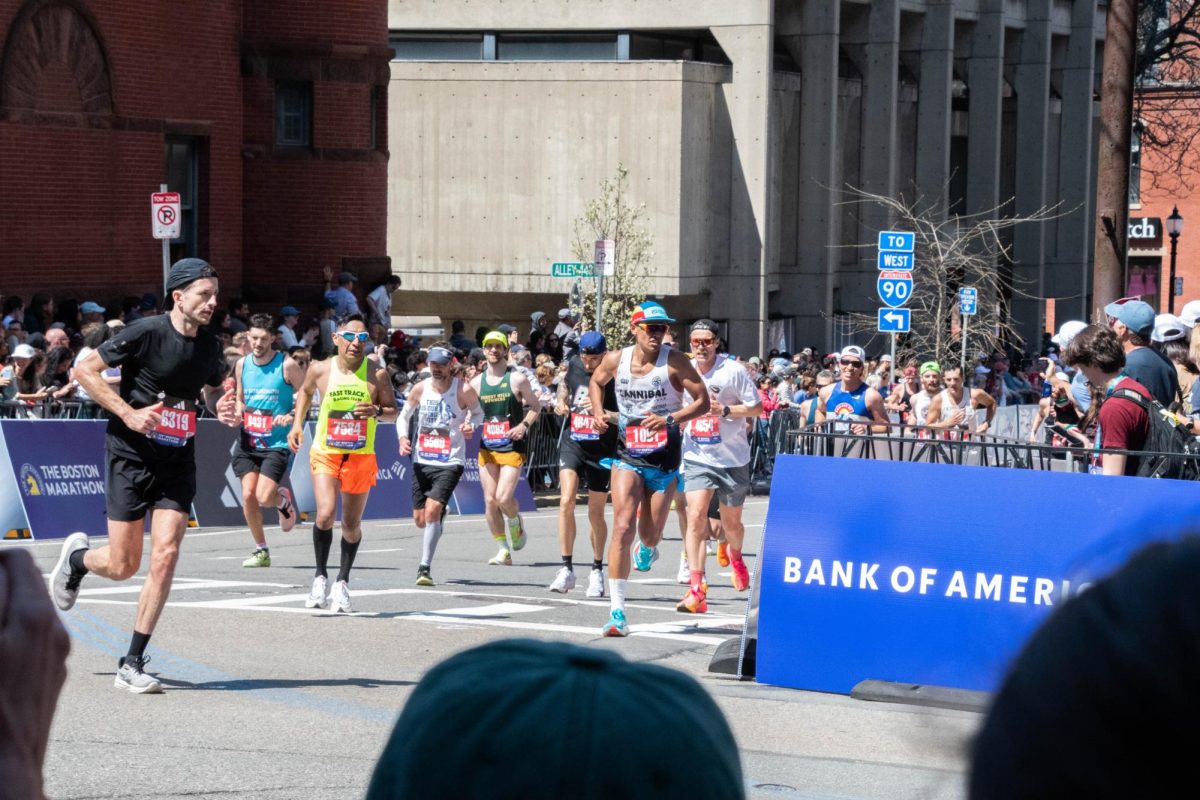By Emma Shuck, news correspondent
For the modern-day Bostonian, it’s hard to imagine staple landmarks like Copley Plaza and Faneuil Hall to have ever looked any different, but the city has actually undergone many years of transformation. At the Boston Public Library’s most recent exhibition, titled “Greetings from Boston,” visitors have a chance to see these changes from a unique perspective and through a means of communication that most have long forgotten.
The exhibit is comprised of four large murals that are decorated with historical postcards of the city, some of which date back to the 1600s. The displays are located in the Johnson Lobby of the public library’s main branch in Copley Square, and aside from the extensively decorated murals, visitors can also view the blown-up copies of old postcards–some of which are still legible — that hang scattered along the ceiling.
Jim Welch, 48, who lives in the Boston area, said he was impressed with the displays.
“In terms of how the exhibit is presented, they couldn’t have done it in a more interesting way,” he said. “There are descriptions along the wall that tell you some history about Boston, as well as information on the postcards and their history as well. All together, it’s almost like the exhibit tells a story.”
After having collected a few postcards of Cambridge over the years, Welch was eager to see the differences in how Boston used to be portrayed.
“It’s interesting to see how much this city has changed, and actually kind of sad as well,” he said. “For example, the historical Scollay Square area used to be so beautiful, and now that City Hall is there, its original charm has been destroyed.”
Each of the four murals offers a separate theme, and by the end of the exhibit, visitors are exposed to “vintage” Boston through the depiction of the literary, social and architectural history of the city in the early twentieth century. The selected postcards were chosen from the 165,000 cards from the Boston Public Library’s extensive collection, and include photo reproductions of Boston-area churches, businesses, schools, factories, parks, transportation systems and main streets. The sections of the exhibit are each uniquely decorated; one is arranged as a lively collage of postcards and descriptions, and another features a select few postcards that are decadently hung in mahogany frames atop a large-scale map of the city originally published in 1928.
Shaun Gotterbarn, 25, an architect from Providence who was on a short visit to Boston, stopped to view the exhibit this past Saturday. Gotterbarn was curious to see how different the buildings around Boston looked so long ago.
“It’s nice to see history preserved in such a unique fashion — a lot of these places don’t exist anymore,” he said.
Whether visitors of the library came specifically to see the displays, or stopped to take a quick look while walking by, it was evident that the postcards generated a lot of interest. “Greetings from Boston” will be on display until March 31, 2011 at the Boston Public Library, and visitors can view the free exhibit at any time during normal business hours.








